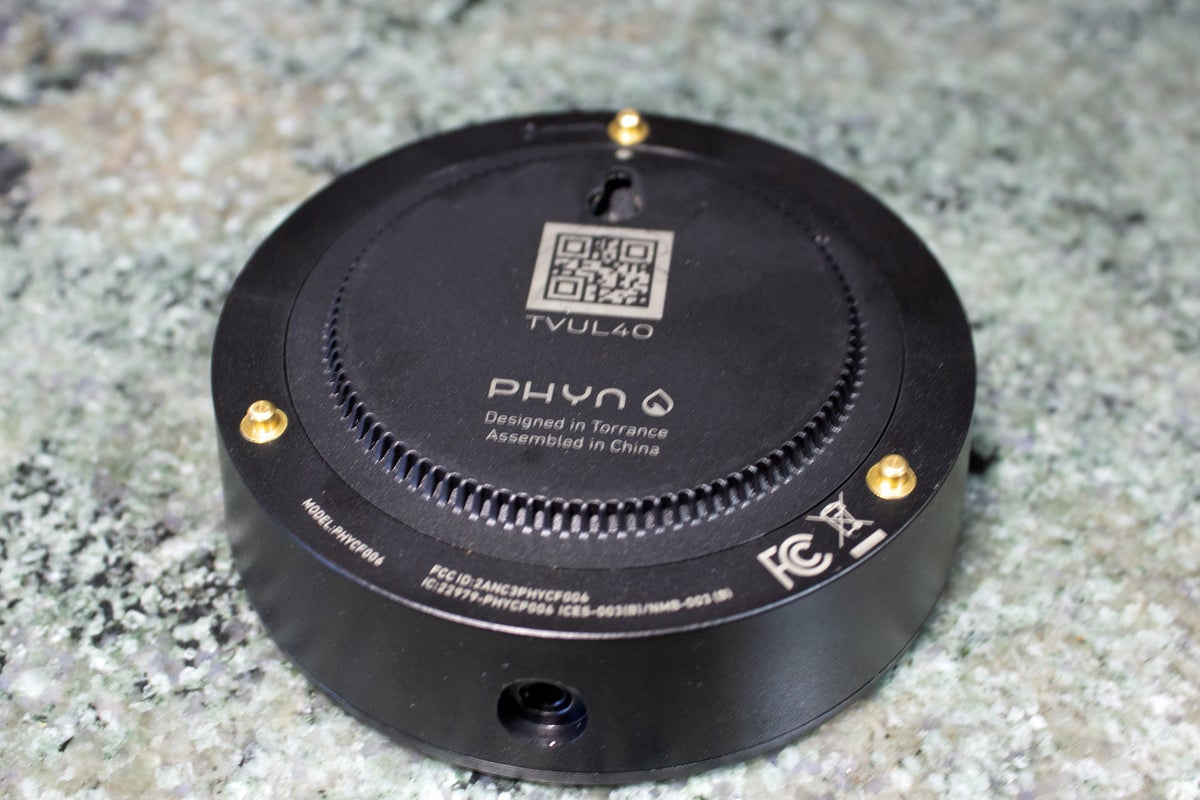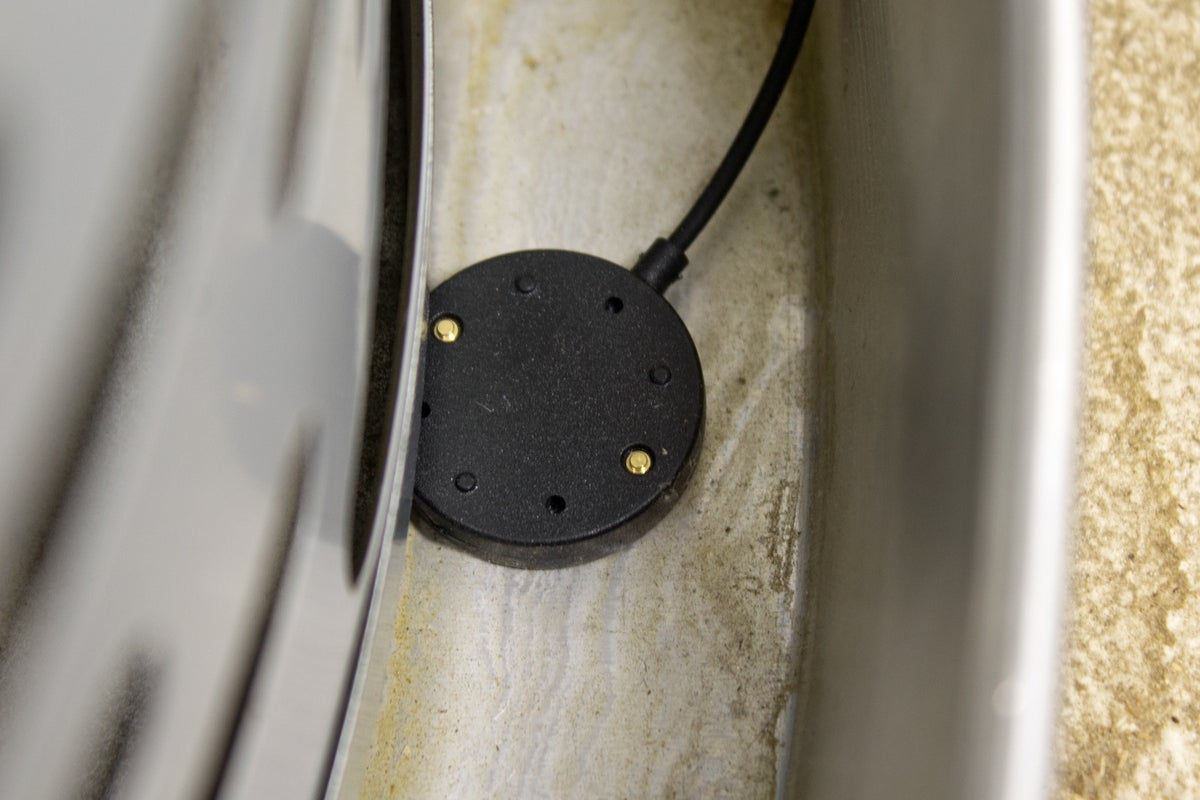Used alone, it can warn you of leaky pipes, failing appliances, and more. Used in conjunction with the Phyn Plus smart water valve, it will actively protect your home from those threats.
Phyn
Today’s Best Tech Deals
Picked by TechHive’s Editors
Top Deals On Great Products
Picked by Techconnect’s Editors
If you’ve read any of our coverage of leak detectors and smart water valves, you know that water is a far more common threat to the integrity of your home than fire, earthquake, or just about any other calamity. Deploy Phyn Smart Water Sensors under your sinks, near your washing machine, next to your water heater, and other places where water might show up where it shouldn’t be, and you’ll get an immediate warning if it does.
If you also have a Phyn Plus smart water valve, you can configure the sensor to shut off your main water supply to prevent a minor leak from turning into a catastrophe. It’s only fair to point out, however, that the Flo by Moen Smart Water Detector can do the same thing, including the automatic shut-off bit if you have a Flo by Moen Smart Water Shutoff, and those products came to market first.
The Phyn Smart Water Sensor is a puck-shaped device 3.5 inches in diameter and about 1-inch high that measures ambient temperature and humidity levels in addition to checking for the presence of water in places it shouldn’t be. You can program it to alert you when humidity drops below a defined threshold (overly dry air can cause bloody noses, scratchy throats, and other ailments) or rises above a defined ceiling (a good early warning to check for damp floors or walls, as well as the presence of mold). You can also set up an alert when temperatures around the sensor drop below a defined level, such as a few degrees above freezing, so you can take action to prevent your water pipes from freezing.
This review is part of TechHive’s coverage of the best water leak detectors, where you’ll find reviews of the competition’s offerings, plus a buyer’s guide to the features you should consider when shopping for this type of product.
The sensor operates on a pair of AA batteries that the company says should last two years while sending daily temperature and humidity level updates to the app. Opting for these condition updates three times a day reduces the estimated battery life to less than a year. The presence of water will, of course, generate an immediate message any time its detected.
 Michael Brown / IDG
Michael Brown / IDGIf water comes in contact with any of the three probes on the bottom of the Phyn Smart Water Sensor, the device will fire off an immediate warning.
Limited to 2.4GHz networks
The sensor needs to connect to your Wi-Fi network to fulfill its mission, and as is all too common with smart home devices, it’s limited to operating on a 2.4GHz network. If you have a dual-band router that assigns the same SSID to both its 2.4- and 5GHz networks, you’ll likely run into problems while setting up this device.
Because I have so many smart home devices with the same limitation, I’ve long since given up trying to operate both wireless networks with the same SSID. While that means I’m giving up my mesh router’s ability to automatically assign dual-band client devices to whichever network presents the strongest signal at that device’s current location, it’s just not worth the hassle of having some gadgets periodically drop off the network entirely.
While it’s great that the Phyn doesn’t depend on a hub or anything other than your router to operate, and there are no subscription fees to deal with, it would be wonderful if it also connected to a cloud service such as IFTTT, so that hardcore smart home owners can to write rules that would trigger other devices or actions.
 Michael Brown / IDG
Michael Brown / IDGThe Phyn Smart Leak Sensor can send both push notifications to the Phyn app and text messages when it comes into contact with water.
How it works
Three sensor probes emerge from the bottom of the device. When any of these contact water, an LED on the Phyn’s face flashes red and an onboard speaker sounds a persistent, but not-very-loud alarm (it’s just a mild beep, really, but you’ll hear it if you’re in the same room).
You’re much less likely to miss the push notification to the Phyn app and the optional text message the system will send to your smartphone. If you also own a Phyn Plus smart water valve, you’ll have the option of turning off your main water supply as soon as you open the Phyn app.
Phyn also sells accessory cables that extend the sensor’s reach, allowing you to monitor locations where the primary sensor won’t fit, such as under a washing machine. A keyhole on the back of the primary sensor lets you hang that part on the wall and run the cable where you need it, although the primary sensor will remain capable of detecting water when either cable is plugged into it.
The Phyn Water Sensor Extension Node (a 48-inch cable with a 1-inch-in-diameter probe at the end) sells for $10, while the Phyn Water Sensor Cable goes for $25.99. The entire 48-inch length of the latter cable will detect the presence of water, just like the two probes, and a female coupling at one end lets you connect it to the extension node to double its reach. Alternatively, you can daisy-chain up to three sensor cables to get 12 feet of reach in total, should you really need it. That would cost you upwards of $75, so it’s worth pointing out that you can buy a two-pack of the primary sensors for about the same amount, or a three-pack for $100.
 Michael Brown / IDG
Michael Brown / IDGIf you need to monitor a tight spot, this optional sensor extension cable ($10) will fit almost anywhere.
You can deploy a maximum of nine Phyn Smart Leak Sensors in your home, assigning a unique name to each. I had planned to install this review unit under my master bathroom sink, but I ultimately changed tack and dropped the extension node in the catch basin of my water heater, hanging the primary sensor on the wall. This is how I tested the competing Flo by Moen product, but as you’ll see in the screenshots, I forgot to change the sensor’s name. Oh well. The good news is that Phyn’s sensor reacted nearly instantaneously when I dribbled just a few drops water into the pan where the sensor was resting.
Bottom line
The Phyn Smart Leak Sensor is easy to install and is very effective at warning you of water leaks, extreme humidity levels, and low temperatures that pose the risk of freezing your pipes. It’s very similar to the Flo by Moen Smart Water Detector, which works in conjunction with its own smart water shutoff valve, but I give Phyn a slight edge for two reasons: Moen’s device has vents on top that might allow water ingress, and it relies on a CR123A lithium battery where the Phyn uses ordinary AAs. But at the end of the day, both of these products are considerably better than anything else on the market today.
Note: When you purchase something after clicking links in our articles, we may earn a small commission. Read our affiliate link policy for more details.
The Phyn Smart Water Sensor is ever so slightly superior to the next-best product in this category, the Flo by Moen Smart Water Detector. Both devices warn you of water leaks, extremes in ambient humidity, and freezing temperatures. And they both can work with their smart water valve to shut off your water supply to prevent catastrophic water damage, although that’s a pricey option in either case. Phyn edges out Flo by Moen by virtue of its industrial design and choice of battery power.
Pros
- Sends an immediate warning when water contacts it
- If you also own the pricey Phyn Plus, it can automatically turn off your main water supply to prevent catastrophic damage
- Industrial design prevents water ingress from the top of the device
- Operates on two AA batteries
- You don’t have to pay for the extension cable with remote sensing disk unless you need it
Cons
- Phyn makes the only compatible smart shut-off valve
- Can’t be integrated into a broader smart home ecosystem (including IFTTT)
- Operates only on 2.4GHz networks
- Will give you trouble if your dual-band Wi-Fi router uses the same SSID for both its 2.4- and 5GHz networks
Michael covers the smart-home, home-entertainment, and home-networking beats, working in the smart home he built in 2007.


